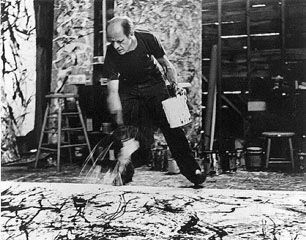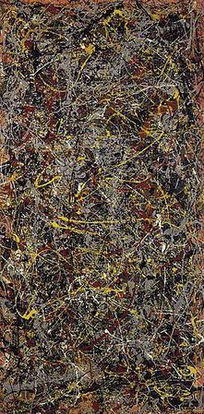Pollock was key figure in the development of abstract painting - and the founder of Abstract Expressionism.
Like Kandinsky and Mondrian, he was convinced that beauty could be created independently from recognisable forms.
While Kandinsky was inspired by music and Mondrian limited himself to 3 colours and 2 lines, Pollock is famous for adding the new dimension of performance to his paintings.
His technique was known as "dripping".
He would place his canvas on the floor and pour paint over them.
For Pollock, the creative process was as crucial as the final artwork itself.
While many people criticised the result as "random", Pollock knew what he wanted - working and reworking the painting until he was satisfied it achieved the desired effect.
As he described it : "When I'm in my painting, I'm not aware of what I'm doing ... I have no fear of making changes, destroying the image, etc., because the painting has a life of its own. I try to let it come through. It is only when I lose contact with the painting that the result is a mess. Otherwise there is pure harmony, an easy give and take, and the painting comes out well."
His work was described as "volcanic" : "it has fire. It is unpredictable. It is undisciplined. It spills out of itself in a mineral prodigality, not yet crystallised."
Pollock is regarded as one of the most influential American artists of all time.
One of his paintings recently sold for a staggering $200 million.








.jpg)